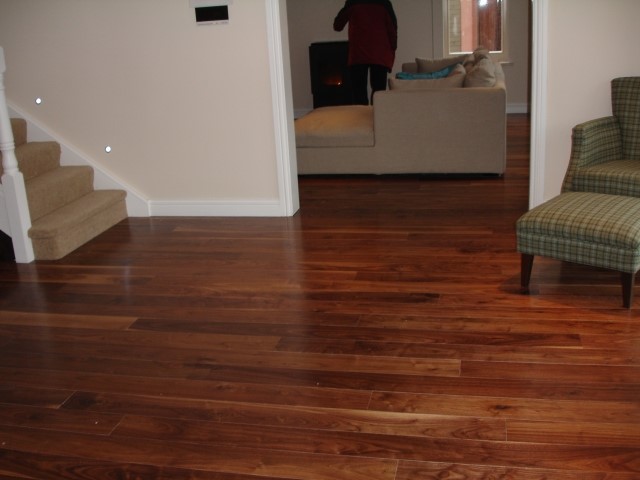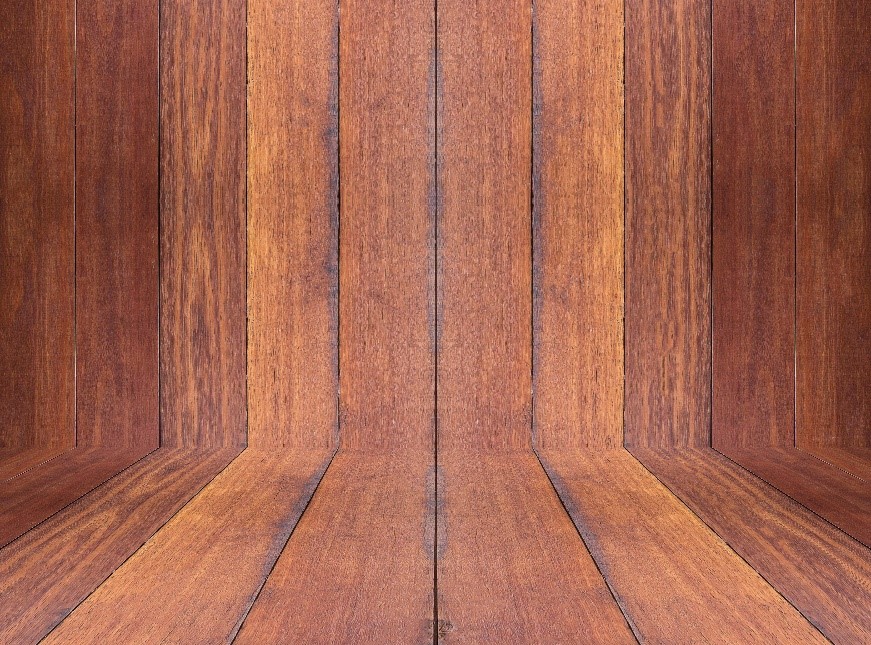The Differences Between Engineered Flooring and Solid Hardwood Flooring
Contents |
Introduction
Engineered and solid hardwood flooring are very similar - when on the floor, engineered boards look identical to solid wood. However, although they look the same, they can act and react very differently. Engineered floors are tougher, but solid wood flooring can last longer.
Properties of engineered flooring
Engineered flooring is made up of core boards and timber that are effectively layer after layer of ply that are bonded together. These boards are topped off with a lamella or top layer of solid wood, which is what makes engineered wood flooring look just like solid wood.
Engineered flooring can be installed as a floating floor, meaning if you moved home, you could take the floor with you as it does not stick to the subfloor. Wood is a natural product meaning it can be affected by humidity and temperature, but the construction of engineered wood makes it less reactive to these changes. This makes it structurally solid and much less likely to damage or warp.
Engineered timber is now the most common type of wood flooring used globally, and the technology has enabled the production of much wider boards.
Properties of solid hardwood flooring
Hardwood flooring is made from solid wood of almost any hardwood species or grade. Solid wood flooring is made of 100% natural wood, and the solid wood boards are refined from one piece of hardwood, then treated with a protective coating.
Solid wood provides the authenticity of a classic wooden floor, and usually thick boards mean they can be re-sanded and refinished numerous times without any damage – giving a quality floor which will last a lifetime.
Solid hardwood is for purists considering long-term prospects and who do not mind installing different types of flooring in different parts of the house.
Popular uses
Engineered wood is more suitable for higher moisture areas and rooms with environments with varying humidity levels such as kitchens and conservatories. This also makes it suitable for use over concrete floors. Engineered wood has a greater range of installation methods, such as stapling, nailing, click or glue.
As solid wood is one piece of hardwood from top to bottom, it needs to be nailed or stapled down to a permanent floor, meaning a concrete base is a problem, and it can never be installed on a floating basis.
Solid hardwood is best used in living areas, bedrooms, hallways, and dining rooms. Also, it is wise to avoid solid wood in kitchens, only installing if waterproof mats are placed near sinks and dishwashers.
Wood species
There are fewer choices with engineered wood. Red oak, hickory, and Brazilian Cherry are the most popular wood species for engineered flooring.
There are far more choices of wood species for solid hardwood. Red and white oak, maple, hickory, and pine are the most popular choices.
--G&S Specialist Timber 09:01, 16 May 2017 (BST)
Related articles on Designing Buildings Wiki
- 11 things you didn't know about wood.
- Bamboo flooring.
- Click and lock flooring.
- Cross-laminated timber.
- Engineered bamboo.
- Floating floor.
- Hardwood.
- Physical Properties of Wood.
- Plywood.
- Softwood.
- Subfloor.
- The differences between hardwood and softwood.
- Types of flooring.
- Types of timber.
- Best Woods for Wood Carving
- Oak wood properties
- Pine wood
- The Uses of Wood in Construction
Featured articles and news
Latest Build UK Building Safety Regime explainer published
Key elements in one short, now updated document.
UKGBC launch the UK Climate Resilience Roadmap
First guidance of its kind on direct climate impacts for the built environment and how it can adapt.
CLC Health, Safety and Wellbeing Strategy 2025
Launched by the Minister for Industry to look at fatalities on site, improving mental health and other issues.
One of the most impressive Victorian architects. Book review.
Common Assessment Standard now with building safety
New CAS update now includes mandatory building safety questions.
RTPI leader to become new CIOB Chief Executive Officer
Dr Victoria Hills MRTPI, FICE to take over after Caroline Gumble’s departure.
Social and affordable housing, a long term plan for delivery
The “Delivering a Decade of Renewal for Social and Affordable Housing” strategy sets out future path.
A change to adoptive architecture
Effects of global weather warming on architectural detailing, material choice and human interaction.
The proposed publicly owned and backed subsidiary of Homes England, to facilitate new homes.
How big is the problem and what can we do to mitigate the effects?
Overheating guidance and tools for building designers
A number of cool guides to help with the heat.
The UK's Modern Industrial Strategy: A 10 year plan
Previous consultation criticism, current key elements and general support with some persisting reservations.
Building Safety Regulator reforms
New roles, new staff and a new fast track service pave the way for a single construction regulator.
Architectural Technologist CPDs and Communications
CIAT CPD… and how you can do it!
Cooling centres and cool spaces
Managing extreme heat in cities by directing the public to places for heat stress relief and water sources.
Winter gardens: A brief history and warm variations
Extending the season with glass in different forms and terms.
Restoring Great Yarmouth's Winter Gardens
Transforming one of the least sustainable constructions imaginable.

























Comments